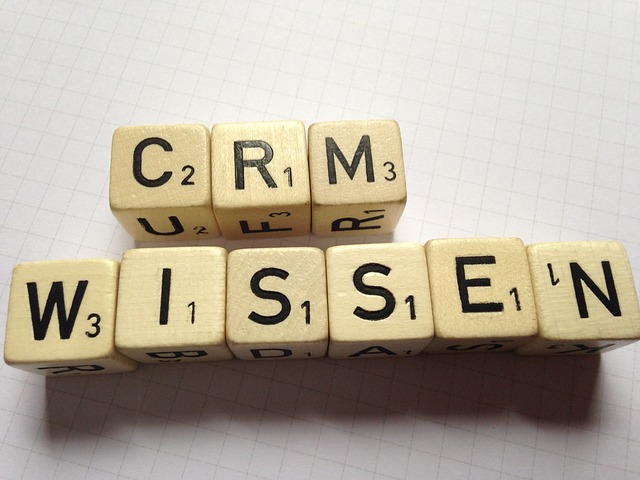Understanding International E-Commerce
International e-commerce refers to the buying and selling of goods and services across borders via the internet. As businesses grow, many recognize the immense potential that lies within global markets. In today’s interconnected world, consumers aren’t limited to local products; they seek variety, quality, and price advantages that international shopping can offer. Optimizing your e-commerce store for international markets requires a strategic approach, fine-tuning various aspects to cater to diverse audiences effectively.
First, let’s delve into why global markets matter. The internet has broken down geographical barriers, allowing consumers to shop from virtually anywhere. These global markets host a variety of consumers with unique preferences. From differing currencies and languages to varying shopping behaviors, each market presents distinct challenges and opportunities. A successful approach begins with understanding these variances and tailoring your strategies accordingly. With more businesses embracing international e-commerce, staying ahead of the competition becomes vital.
Market Research and Analysis
The cornerstone of any international e-commerce strategy lies in thorough market research and analysis. Identifying where to expand requires understanding both customer needs and market dynamics. Conducting market research involves gathering data about potential target countries including their consumer behaviors, payment preferences, and regulatory environments. For instance, while some countries may favor credit card payments, others might lean towards cash on delivery. Therefore, examining such nuances helps in designing an effective pricing strategy and payment options for your store.
Furthermore, evaluating competitors in your target markets reveals insightful information on how they position their products, pricing strategies, and marketing tactics. Tools like Google Trends and regional analytics platforms provide data on product demand and consumer behavior tailored to specific countries. Once you’ve gathered sufficient information about prospective international markets, you can create targeted strategies that truly resonate with local consumers. Additionally, staying informed about local economic conditions, such as currency fluctuations and import/export regulations, can prove beneficial for navigating complex international landscapes.
Localization: Key to Success
Localization is an important element when optimizing your e-commerce store for international markets. It goes beyond simply translating content; it involves adapting your entire online shopping experience to meet local expectations and cultural norms. Language is a significant factor; shoppers are more likely to make a purchase if they see content in their native language. Therefore, hiring native speakers or professional translation services ensures not only accurate translations but also culturally relevant messaging.
Localizing your website goes further, encompassing images, currency, and units of measurement. For example, displaying prices in local currency prevents confusion and builds trust with customers. Also, consider adjusting measurement units; for instance, using metric measurements in countries that favor that system can enhance user experience. Additionally, reviewing local laws regarding e-commerce and consumer rights is vital. This attention to detail fosters a sense of reliability and respect towards international consumers, encouraging repeat business and brand loyalty.
Optimizing User Experience
User experience (UX) plays a pivotal role in international e-commerce success. A seamless, intuitive shopping experience boosts the chances of conversion. Start by ensuring that your e-commerce website is mobile-responsive. With an increasing number of consumers using mobile devices for shopping, your site must function seamlessly across all platforms. This entails fast loading speeds, easy navigation, and clear calls-to-action that guide users through the purchasing process.
In addition, evaluate your site’s performance in different geographical areas. It’s crucial to optimize loading times, especially in regions where internet speeds might be slower. Utilizing content delivery networks (CDNs) enhances website speed, significantly improving user satisfaction. Also, invest in high-quality product images and detailed descriptions that allow customers to visualize their purchases better. Personalizing the shopping experience, through recommendations based on browsing behavior, can also increase online sales growth. Providing virtual try-on features or live chat support fosters greater engagement and can help address any concerns that potential customers have, ultimately leading to higher conversion rates.
Global Shipping Solutions
Logistics play a critical role in international e-commerce. Understanding and implementing effective global shipping solutions ensures that your products reach customers promptly and in good condition. Start by partnering with reliable shipping companies experienced in international delivery. Researching various shipping options allows you to offer a range of choices to customers, from standard to express delivery. Providing tracking information empowers consumers by keeping them informed about the location of their purchases.
Also, take the time to analyze shipping costs and consider how these will impact your pricing strategy. Some customers might abandon their carts due to exorbitant shipping costs; therefore, offering competitive rates or free shipping on orders above a certain threshold can boost conversion rates. Keep in mind that customs, duties, and other fees might come into play in international shipping; factor these into your calculations to avoid surprising your customers with unexpected costs. By prioritizing efficient and transparent shipping practices, you can build credibility and encourage consumers to shop confidently across borders.
Payment Options and Security
In international e-commerce, providing diverse payment options is key to catering to global customers. Consumers in different regions favor different payment methods. For instance, while credit cards may be widely used in North America, many consumers in Asia prefer alternative payment solutions like e-wallets or buy-now-pay-later options. Research the preferred payment methods in your target markets and integrate them into your e-commerce platform.
Furthermore, ensuring secure payment processing cannot be overstated. Consumers want assurance that their financial data remains safe when making online purchases. Utilizing secure payment gateways, SSL certificates, and adhering to compliance standards like PCI DSS establishes trust and demonstrates your commitment to customer security. Highlighting your store’s security features reassures shoppers and can significantly reduce cart abandonment rates. As you expand into international markets, a robust and flexible payment strategy will drive online sales growth and encourage repeat customers.
Marketing Strategies for Global Reach
Marketing your e-commerce store to international consumers requires innovative, tailored strategies. Develop a multi-channel marketing approach that includes social media, email campaigns, and search engine optimization (SEO). First, identify popular social media platforms in your target countries. Certain platforms thrive in one region while being less popular elsewhere; for example, WeChat dominates in China while Facebook has a larger audience in the West. Creating content tailored to each platform enhances your visibility and engagement with potential customers.
Email marketing remains a powerful tool for reaching consumers regardless of where they are. Consider segmenting your email lists based on demographic data to send personalized messages that resonate with specific audiences. Additionally, optimizing your content for SEO can greatly improve your online presence through organic search results. Keyword research should focus on local terms and phrases that align with your audience’s search habits, which vary from one region to another. This targeted approach enables you to connect with consumers and encourages higher traffic, ultimately leading to increased sales.
Compliance with Regulations
Operating in international markets demands strict adherence to local laws and regulations. Regulatory compliance not only helps avoid legal issues but also fosters trust with consumers. Every country possesses unique e-commerce regulations, covering areas such as consumer rights, data protection, and advertising standards. Be sure to familiarize yourself with these rules before launching your store in a new market.
For instance, the General Data Protection Regulation (GDPR) imposes comprehensive regulations on how businesses collect and manage consumer data in the European Union. Implementing compliant data practices enhances your store’s reputation and helps build customer trust. Additionally, understanding local tax implications and customs duties is vital for accurately pricing your products and informing consumers of any additional costs involved. Staying informed about regulatory developments in your target markets ensures your business operates ethically while maximizing sales growth opportunities in international markets.
Leveraging Analytics for Continued Improvement
Lastly, harnessing analytics tools can drive continuous improvement in your international e-commerce strategy. Monitoring key performance indicators (KPIs) helps you gauge your success and identify areas needing adjustment. Track metrics such as website traffic, conversion rates, average order value, and customer acquisition costs. Utilizing tools like Google Analytics provides invaluable insights into consumer behaviors and preferences across different markets. This data empowers you to refine your approach and make informed decisions.
Experimentation plays an essential role in optimization too. Consider A/B testing various elements of your website, such as landing pages or promotional strategies, to gauge what resonates with your international audience. Gathering feedback from customers through surveys or reviews allows you to adapt to market needs better. More than just tracking metrics, adopting a culture of continuous improvement strengthens your international sales efforts and positions your e-commerce store for long-term success in a rapidly changing global environment.
FAQ
1. How can I choose the right international market for my e-commerce store?
Choosing the right international market requires thorough research. Analyze your products’ demand, competition, cultural compatibility, and logistics feasibility. Speaking to consumers through surveys or focus groups in potential markets can also provide valuable insights.
2. What are the best practices for localizing my e-commerce website?
Best practices include translating content accurately into the local language, adopting local currencies, and adjusting measurements to local standards. Tailor your marketing message to align with cultural contexts and preferences in each market.
3. What payment options should I offer for international customers?
Offer a variety of payment options, including credit and debit cards, local payment gateways, digital wallets, and buy-now-pay-later options based on your market research. Catering to popular local preferences enhances conversion rates.
4. How can I ensure the security of my international online transactions?
To ensure transaction security, use secure payment gateways, SSL certificates, and comply with financial regulations like PCI DSS. Highlight your security measures on your site to build consumer trust.
5. Why is market research crucial for international e-commerce?
Market research is vital as it helps you understand customer needs, preferences, local regulations, and competition. This understanding guides your marketing strategies and product offerings, increasing your chance for success in new markets.



